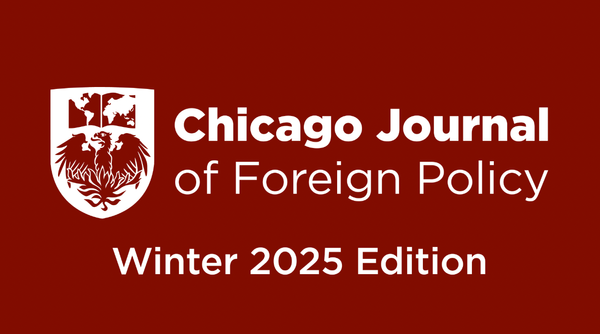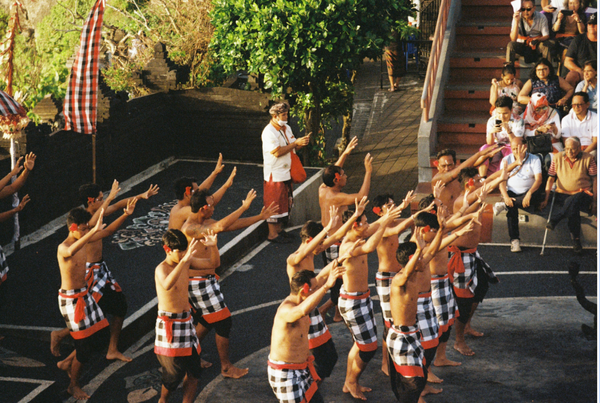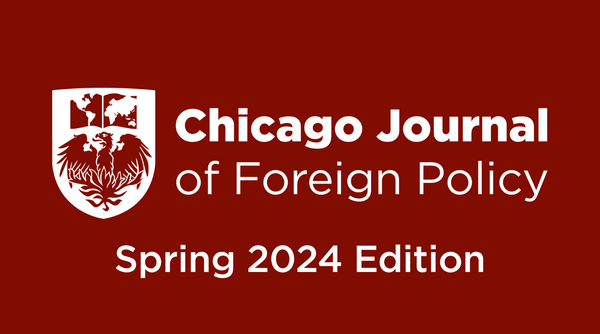Professor Spotlight: Robert Pape

by Thomas Weil ’22
Note: The following interview was conducted in late May 2021 and details surrounding the assault on the Capitol or CPOST’S work may have been updated in the interim. CPOST’s most recent report on the topic, titled “Why we cannot afford to ignore the American insurrectionist movement”, was posted on August 6th, 2021 on the CPOST website (https://cpost.uchicago.edu/research/domestic_extremism/why_we_cannot_afford_to_ignore_the_american_insurrectionist_movement/) .
Dr. Robert A. Pape, PhD, Professor of Political Science (https://political-science.uchicago.edu) has been at the University of Chicago since 1999, first as an Associate Professor, and, since 2005, as full Professor. At the University, he serves as the Director of the Chicago Project on Security and Threats (CPOST; https://cpost.uchicago.edu), and as Co-director of the Program on International Security Policy. An expert in national and international security affairs, he focuses on several disciplines: airpower, domestic American and international violence and terrorism, and social media propaganda.
Throughout his career, Professor Pape has been funded by a variety of sources, including the Carnegie Corporation and the US Department of Defense via the Pentagon’s Defense Threat Reduction Agency. Most recently, he and CPOST have a unique grant funded by the US Department of Defense, as part of its Minerva Initiative, entitled “The Social and Neurological Construction of Martyrdom.” This grant seeks to collect and study a complete set of available militant videos from contemporary groups (ISIS, Al Shabaab, Al Nusra, etc) to understand how and why militant video propaganda inspires recruits. It involves both qualitative research on militant propaganda strategies as well as behavioral and experimental research (using functional magnetic resonance imaging) in collaboration with Professor Jean Decety of the Department of Psychology, with a focus on uncovering neural mechanisms that underlie moral convictions and judgments about violence.
Among his many publications, for both academic and lay audiences, Dr. Pape has published seminal monographs on the uses and limitations of airpower – Bombing to Win: Air Power and Coercion in War (Cornell 1996) – as well as two incisive studies of terrorism: Cutting the Fuse: The Explosion of Global Suicide Terrorism and How to Stop It (Chicago 2010) (with James Feldman); Dying to Win: The Strategic Logic of Suicide Terrorism (Random House 2005) and detailed reports, commissioned by the US and foreign governments, that have helped frame policy options and discussions around the war on terror.
Dr. Pape presents frequently to academic audiences, to members and agencies of the United States government, and writes for the public in a variety of publications including the Boston Globe, Chicago Tribune, New York Times, Wall Street Journal, and Washington Post, among others.
Professor Pape received his undergraduate (BA) degree summa cum laude and a Master’s degree in Political Science at the University of Pittsburgh, both in 1982. He obtained his PhD from the University of Chicago in 1988. He has taught at the University of Michigan, the Air University (the United States Air Force’s USAF’s School of Advanced Airpower Studies), and at Dartmouth College prior to moving to Chicago.
What is a book or article that you think every undergraduate interested in studying international relations and National Security must-read? Why?
I would start with Hans Morgenthau, “Politics Among Nations”. This is the book that I read when I was an undergraduate in my very first class on international politics. It’s the book that when I read it, it’s probably why I’m here today. What you’re going to see in that book is an analysis centered on power, the concept of power. It is a central concept in international relations and international politics, and it is central, even if you think it shouldn’t be central.
So, that book is the book I would start with.
You lead CPOST at the University of Chicago. What is CPOST?
The Chicago Project on Security & Threats (CPOST: https://cpost.uchicago.edu/) is a center that’s dedicated to understanding threats to the lives of people in the United States and around the world. It’s centered around the idea that there are threats to people, those threats change over time, and they vary during certain points in time, so we need to understand the nature of what those security issues are, what the drivers are what the scope is, and we need to understand that those issues may change over time. So, that is what the Chicago Project On Security and Threats is set out to do.
What are some of the key contributions and highlights from the 17-year history of CPOST?
The hallmark of CPOST is the use of tools of social science to collect information, analyze information, and then based on that, to develop original policies or policy initiatives to help prevent, mitigate, contain or otherwise deal with threats to human welfare. The hallmark of what we do is social science. And so we bring tools together to collect and analyze universes of data.
One of the key contributions was what started CPOST. CPOST started in February 2004, after I collected the first complete data set of all suicide attacks around the world. That dataset yielded some very powerful findings of what the key factors are that were driving suicide attacks, and it showed that religion was not the centerpiece of suicide terrorism because over half at that time of suicide attacks were not carried out by Islamic fundamentalists. That then led to powerful new understandings about the role of our foreign policy and the foreign policy of states, and especially military policies in driving suicide terrorist campaigns. That led to discussions with the then Bush administration about how to work from those findings. It challenged many things the Bush administration was doing at that time, including challenging the idea that the invasion and occupation of Iraq was a good idea that would help our security. This work challenges that fundamentally. And so that was a major contribution.
Another major contribution just happened with January 6th and the study of political violence and study of threats with a large research team. So a second key hallmark of CPOST is the use of large research teams to help us collect that data for our social science tools. And we did this with respect to who was arrested for breaking into the Capitol on January 6. We also went further and I’ve conducted surveys, including nationally representative surveys, about the key scope and drivers of the insurrectionist movement in the United States today. And those are key studies that are creating new knowledge that is useful for scholars, useful for journalists and useful for people in government.
Recently, CPOST has been working to analyze the events at the US Capitol on January 6th. What have been some of the initial findings from your analysis of the arrest records?
The key thing that we found with people who are being arrested for breaking into the Capitol on January 6th is that they’re not simply the usual suspects who commit far-right violence. We’re used to thinking of people who commit far-right violence as being young people in their late teens and early 20s. We’re used to thinking of them being unemployed, with 25% or 30% of them being unemployed. We are used to them thinking that they are members of militant groups like the Proud Boys, the Oath Keepers, or the Three Percenters. What we see is that in the now over 430 individuals who have been arrested for breaking into the Capitol, over 88% are not affiliated with militant groups like the Proud Boys, the Oath Keepers, and the Three Percenters. We also see that two-thirds are over the age of 34, and it very striking to see the heavy concentration of people in their 40s and in their 50s. And we see that only 7%, which is near the national average, are unemployed. We see 45% are CEOs business owners, and people from white-collar occupations like doctors, lawyers, and accountants. So it’s a very different picture than we’re used to seeing and so right off the bat, that’s important.
We further look at the counties that they come from, we know where they reside from the court documents, and we can see that over half, 52%, are coming from counties that Biden won in 2020. That is, they’re coming from blue areas like Chicago, San Francisco, Los Angeles Houston, Dallas, and New York City. They are not all coming from the reddest parts of America. And then finally the county analysis tells us something important about which counties in particular. The biggest predictor of the county aside from simply the size of the population of the county is that the counties that lost the most non-Hispanic white population are the most likely to have had an insurrectionist on January 6th.
That’s a very important finding because then we went further, and we did a nationally representative sample with the National Opinion Research Council (NORC) here at the University of Chicago. We conducted a gold standard survey and discovered that 4% of all adults, that is 10 million people in the United States, both: one, believe that the election was stolen, and two, state that they would willingly participate in a violent protest. A key risk factor at play is the belief that the rights of blacks and Hispanics are outpacing the rights of whites. That is, in another way, in another survey, in another sample, a very consistent finding, which is that fears of the “Great Replacement” appear to be a powerful driver, and we see that again across two different social science analyses with different methods and different samples, but pointing in the same direction.
In regards to the Great Replacement, seeing as the country is becoming more diverse, especially amongst the youth, do you expect this thinking to motivate more political violence in the future?
I think we need to understand that the demographic shifts underneath the fear of the “Great Replacement” have been going on for decades. That is not new. What’s new from January 6th is collective political violence. And what we need to understand is that that likely also involved manipulation by political leaders and yes we find support for Donald Trump in our survey is a key risk factor for being in that 4%. So, it’s the case that we shouldn’t look at any one of these objective realities without understanding that they can be manipulated, and especially fear, can be manipulated by political leaders. So, unfortunately, there’s every good reason to be concerned about political turmoil in 2022, but it has a lot to do with how we see some of the key ingredients that went into January 6th at the political level, have been reinforced in the last three months. Those are the reasons, the political reinforcement of those fears, to be concerned about 2022.
In your April 6th press release, you refer to the January 6th insurrection as a potential “focal point” of the new movement as well as warn that new “focal points” could happen at any time. What is a focal point and why are they important for domestic and international terrorism?
A focal point is a local event that has national implications. A focal point is an event that can congeal the expectations of any participants in the event, which can accelerate dynamics for future similar events going forward.
The two key elements here that we need to focus on for January 6th are: number one, people who were part of the mob came from 44 states. They came far and wide. That’s very unusual in rallies, by the way, usually rallies you have two-thirds, maybe more, coming from just a subway ride away. So the fact you have 44 states represented here shows this is a very, very different kind of rally. They also are meeting each other spending hours with each other, undoubtedly swapping phone numbers, and now they’re able to communicate in encrypted ways like on WhatsApp, which is very important to understand as a focal point of coordinating expectations going forward.
The second is that January 6th is going down, in the folklore of the movement, and you see this in Marjorie Taylor Green’s description of this, as the new Independence Day. And moreover, in terms of coordinating political expectations, leaders who have supported the January 6th insurrection are now politically ahead. Donald Trump, who lost in the 2020 election, is much more politically powerful now as a result of January 6th than he would have been without January 6th. In fact, people are talking about a cult of personality around him in the Republican Party. Other leaders as well are getting ahead politically by supporting this. In fact, what you see is that the party is now circling the wagons around the idea that January 6th was actually a positive event.
Well, that is what it means to congeal political expectations, and it’s very dangerous going forward.
According to CPOST data, only about 11 percent of the insurrectionists had connections with pre-existing militia groups, and according to your surveys, the vast majority of those who believe the election was stolen do not want to rectify it violently. How do these two statistics work in relation with what we saw on January 6th? Was the crowd made up of only the small majority of people who wanted to act violently to “stop the steal”, did the minority of people tied to militia groups galvanize the rest of the crowd to become violent, did Trump’s words push these individuals to violence? Based on your data, was there an incendiary mechanism that turned a group of mostly everyday people to violence, or was this largely pre-planned?
There’s undoubtedly an element of preplanning because people planned to come on January 6th and they had to come from, in some cases, 3000 miles away.
This wasn’t just people who got on a subway ride. A lot of protests, even those that are can be quite large, are spontaneous, meaning that people see a crowd outside their window and they say, “I’m going to go do that.” Well, that means there’s no preplanning there at all.
What we see here is that Donald Trump, weeks before January 6th tweeted to called on people to come to Washington on January 6th, that’s the tweet where he said this is going to be wild, and what you saw is that a wide variety of people organized buses, they organized planes, they organized themselves in a whole variety of ways to come. Yes, and those who were arrested, we know that some 11% were members of militant groups. What do militant groups like the Proud Boys do? Well, they do things that militant groups, do. They come in military garb, they bring radios, that’s just what those groups do. I mean that’s what they plan for.
And by the way, they had come before. On November 12, and December 14, there were other rallies in Washington with upwards of 700 or more Proud Boys at each of these rallies. Many of them, especially in the first rally brought military gear with them. So, we saw the kind of preparations for January 6th on November 12 as well.
Then on December 14 another rally in Washington DC, this one outside of the Supreme Court building, we saw, again, many many hundreds of Proud Boys and other militant groups gathering with other people as well.
But what we didn’t see was them going and storming the Supreme Court. And that’s what is important because of the Electoral College.
What we saw was the presence of not just Proud Boys, but many thousands of people beyond that. January 6th crowd was 50,000 compared to the 5,000 who came on December 14. Why the larger crowd? Well, Trump’s tweets seem like a very good explanation for that. Trump did not tweet about the other two rallies. And then if you look at why did the crowd actually storm into the Capitol. Well, if you read Donald Trump’s speech, he’s calling on them to be tough and show their power directly to those congressmen in Congress, and he’s naming them by name, and also naming Mike Pence, as the weak Republicans who must be shown the power of the strong republicans here in the crowd.
Well, the crowd showed their strength by doing what they did. So, that’s how the different pieces are coming together on January 6th, and the same pieces are there on November 12 or November 14. Most of your readers won’t even have ever heard of those rallies.
The difference was Donald Trump’s behavior on January, 6th, and in his tweets leading up to January 6th.
In an interview with WTTW Chicago just after the assault on the capitol, you said that you were not surprised by the insurrection because “What we have been observing for months now, had it been any other country, would have set off many red flags,” Could you unpack this statement a little bit and speak to trends in domestic terrorism as opposed to international terrorism and unrest?
I studied political violence around the world. I started doing this when I started studying Bosnia in the 1990s and also I’m very familiar with our literature on political violence related to elections say as in India. And so what we see around the world is a certain tool kit that politicians often use to stoke up support for them from extremist elements of their supporters which then can lead to violence pretty directly. Slobodan Milosevic in Serbia gave very inciting speeches that were worrying at the time and then of course as the violence really took off in the 90s became quite even more clearly implicated. Then, of course, we’ve seen similar things in elections in India. And what we are seeing here is that politicians, for their own political purposes, use symbols or use rhetoric that can really motivate extremists to come and provide political support, but the risk is that this will then bleed into violence, and those politicians are just willing to do that. Why did I say the red signs were there?
Well, on October 5, I was on WTTW just after the debate with Trump where he said, about the Proud Boys “stand back and stand-by” and it was the stand-by that was really worrisome. Had that been in another country it would have set off alarm bells, where people would have just said this is a nationalist leader who’s using symbols to stoke political support from extremists that can lead to violence.
And that’s what I said on that October 5 interview on WTTW. That’s why I was not surprised. I also said on WTTW that this risk of violence would go all the way through the January 6th certification of the election so I specifically pointed that out.
When I said that the interviewer did an audible gasp because at that point people thought there might be violence on the election day itself, but they hadn’t been thinking about the momentum that was being unleashed by President Trump’s rhetoric.
What do you think the effect of Covid-19 and lockdowns has been on terror and violence – in both the US and abroad?
Abroad, we’ve done a large review of militant attacks around the world throughout the entire year of 2020. And what we see is that with militant groups around the world, the general effect of Covid, has been down. Violence has been down but not sharply, so it’s been down somewhere between 5% and 10% in different regions of the world in different degrees.
It’s been up in one region which is in Sub-Saharan Africa but that’s the lone outlier. And there it’s up because militant groups are mostly fighting themselves not fighting states in those particular areas. And that effect seemed to have been pretty temporary because in the second half of 2020 you see the violence starting to come back.
So, my view on the effect of Covid on militant violence around the world, is that it appears to be a modest negative effect on violence. And it appears to be something that’s temporary because like states militant groups are learning how to operate under the condition of Covid.
In the United States, we can’t say for sure because the violence that we’ve seen in the United States is more this collective political violence. We don’t have a lot of previous data points on this so it’s not so easy to assess the impact of Covid because we just haven’t had a lot of data points yet. And hopefully, we won’t.
But what I would say is that one of the things that may be happening with Covid is that it may, in the United States, be building on a trend we know from our polling data that’s been going on since 1990 which is that there’s been a declining trust in public institutions here in our country. Gallup polls have this very very clear chart break starting in 1990 and, with an exception of a few years after 911, it’s mostly down. And so with Covid here, many many parts of the public believe the federal government, starting last spring, dropped the ball on Covid, and that then is another decline in public trust. And that could be feeding into the overall collective violence we’ve seen in our country.
What is next in your work? Do you plan on continuing CPOST research through the US 2022 midterm elections?
There are two prongs to my work going forward. One project we haven’t talked about yet is the work we have been doing on the impact of propaganda. We’ve been studying the impact of online propaganda and narratives and how they motivate and inspire people to violence that is going to continue. The second element is American political violence. This will certainly be a focus through 2022 and the election season.





